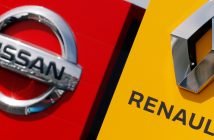+++ ASTON MARTIN has confirmed plans to use PHEVs as a transitional technology on its way to pure electrification, having pushed back its first EV in light of wavering demand for battery-powered sports cars. Its first PHEV, the new Valhalla supercar, is due later this year with an electrified V8 engine from powertrain supplier Mercedes-AMG. When asked about the possibility of the DB12 and Vantage following suit with PHEV power, Aston engineering boss Simon Newton said: “We have an open mind in all technologies right now”. Notably, both of those cars already use the 4.0-litre V8 that’s at the heart of AMG’s range-topping PHEVs. But when asked about the Vanquish, which was revealed this week with a thunderous 840 hp 5.2-litre V12, doing the same, Newton told the engine “defines the car”, adding: “What we picked in the V12 improves the recipe. We haven’t paid the weight penalty. It’s a very analogue but highly sophisticated experience, and that’s what we wanted”. Product boss Alex Long added: “V12 power compared with PHEV power is not the same. If you’re going to put a weight penalty in, you might as well have a decent electric-only range, which just can’t be offered at this time”. Explaining the company’s shift toward plug-in hybrids in February, Aston Martin chairman Lawrence Stroll said its future EVs were “not going away” but there was “a slight delay”. “We believe that the consumer demand for EVs is not at the pace that analysts and politicians thought”, Stroll said. Aston’s first EV, understood to be a high-riding, 4-wheeldrive GT, is now due to arrive in 2026. The company also plans to offer combustion engines for as long as it is permitted to. Stroll said in February that he believes “there will always be demand for such engines, even if it’s small”. +++
+++ CUPRA fears being “wiped out” by the impending EU import tariffs on Chinese-made EVs, due to a snowball effect that would put “the whole financial future of the company at risk”. Proposals being trialled by the European Commission target both Chinese car makers and European firms that have moved production to China, where operating costs are cheaper. They have come in response to calls to protect the European car industry as the European market has been flooded with cheaper options from China. For Volkswagen Group brand Cupra, this would mean an additional 21.3% import tariff. +++
+++ FORD hosted their second quarter earnings call nearly a month ago, but it appears an interesting detail slipped under the radar. During his opening remarks, Ford CEO Jim Farley referred to Dark Horse as a sub-brand. In particular, the executive said: “We took our product portfolio from too many generic vehicles and infused it with passion and purpose. We built out our iconic F-Series and Transit lines, as well as passion vehicles like Mustang and the new Bronco line-up, and sub-brands like Raptor and Tremor and Dark Horse”. That’s interesting as we’ve only seen one mainstream Dark Horse so far. It’s the Mustang Dark Horse. While the company also offers a Dark Horse R race car, a true sub-brand would likely need to consist of more than that. This could suggest a drop top is in the works and that seems possible as dealers were reportedly shown a high-performance convertible with a V8 engine as well as a manual transmission. At the time, some journalists speculated it could be a Dark Horse variant, although others described it as being like a GT350 or GT500 without Shelby badging. That same report also mentioned a Mustang 4-door coupe called the Mach-4. It’s possible that variant could also be in line to receive a Dark Horse variant as well. While only time will tell what Ford has planned, the Raptor sub-brand consists of the Bronco Raptor, Ranger Raptor, and F-150 Raptor. Likewise, there are Maverick and F-150 Tremors and we wouldn’t be surprised to see the Ranger Tremor return to America. +++
+++ The HONDA HR-V has received a gentle nip and tuck 3 years after it was launched, which should help it look as fresh as possible in the hugely competitive compact SUV class. Although considering the HR-V is currently Honda’s best-selling model in Europe, the brand probably didn’t think it needed much help.

Styling tweaks consist of a new grille shape and a sharper front bumper, with all-black trim that’s meant to give the car a more purposeful look. Fresh headlight units feature darkened internals and a more prominent daytime-running light signature, while the LED light bar at the rear has also been updated. 3 new paint colours are available too: Sage Green, Seabed Blue and Urban Grey.

The interior has received similarly subtle refinements, such as the centre console part of the dashboard being reprofiled to make accessing the wireless charging pad easier for the driver and passenger.

Meanwhile, increased sound deadening for the cabin is meant to improve refinement and interior comfort in the HR-V, while all models now come with privacy glass. Honda has also introduced a new Advance Plus trim to the line-up. This adds a glass roof, a unique set of alloy wheels and extended paint finish, with the lower bumpers, wheelarches and other exterior trim finished in the body colour, and contrasted by a ‘Crystal Black’ grille. Finally, the Honda ‘Sensing’ suite of safety and driver-assistance tech (which features on every version) now includes a 360-degree surround-view camera system that can be activated via the touchscreen if needed. Some of the active safety systems have also been updated to reduce their intrusion when driving, and traffic-jam assist has been upgraded to provide steering support from a standstill. +++
+++ MG will begin to equip electric cars with solid-state batteries within the next 12 months, an official from its parent company, Shanghai Automotive Industry Corporation (SAIC), has confirmed. Speaking at the Chengdu motor show in China, Yu Jingmin, executive vice president of SAIC’s passenger vehicle operations, revealed that new solid-state battery technology developed by the company and set to be shared with other SAIC brands will soon be launched in an MG model. Yu, the former sales and marketing boss of the SAIC-Volkswagen joint venture, wouldn’t be pressed on the identity of the first MG to receive a solid-state battery but indicated it is planned to be unveiled during the second quarter of 2025, before going on sale later in the year. The ambitious move advances MG’s previous planned timing on the introduction of solid-state batteries to its production models by more than 12 months. It also places MG ahead of its mainstream market rivals, including Volkswagen, in the planned adoption of solid-state battery technology in volume models. MG sibling brand IM Motor has already revealed its new L6 saloon with first-generation solid-state batteries jointly developed in a partnership between SAIC and Chinese battery specialist Jiangsu Qingtao. IM’s ‘Lightyear’ battery is claimed to offer a more than double the energy density (at 368 watts per kilogram) compared with its existing lithium-iron-phosphate (LFP) battery. With a capacity of 133 kWh, it provides the L6 saloon with an official range of 800 km. IM Motor says the Lightyear battery is also able to provide its latest model with up to 325 km of range in 12 minutes on a high-powered DC charger. No details of MG’s first solid-state battery have been revealed yet but indications are it will have the same 5% liquid mass proportion as the battery used by IM Motor and operate on an 800 Volt electric architecture. The move to equip MG models with solid-state batteries indicates SAIC is planning a steep production ramp-up of the new technology, in a bid to reap important economies of scale across its various brands. Previously, the company said it expects solid-state batteries to offer cost savings of up to 30% over LFP batteries in the longer term. SAIC brands Feifan and Roewe have also indicated plans to adopt solid-state batteries in future models. As well as revealing MG’s solid-state plans, Yu also confirmed the new MG S5 electric SUV revealed in registry filings lodged with China’s Ministry for Industry and Information Technology (MIIT) in July will be launched in China in November 2024 ahead of planned exports in 2025. The new 4.476 mm long model, tipped for sale in European markets by this time next year, is set to be offered with a choice of single- and dual-motor drivetrains in combination with a LFP battery. +++
+++ RENAULT is preparing to unveil a new concept car inspired by a forgotten model from the 1970s. A series of posts published to X previewed the “show car”, which will be unveiled on 4 September. The teaser image shows a blocky front end featuring 4 main lights and a wide grille, leading French media to suggest it’s a reimagining of the Renault 17. The car has been developed in collaboration with French designer Ora Ito, who has previously worked with Citroën, Nike and Heineken, among other brands. Renault may use the concept to gauge appetite for a more sporting model to accompany the 4 and 5 in its line-up of retro electric cars, in similar fashion to the Opel Manta GSe Elektromod and Hyundai Heritage Series Grandeur. The concept is expected to make its public debut at the Paris motor show next month. Renault is leaning on its heritage to differentiate its upcoming EVs from their rivals, starting with the 5 E-Tech. That will be followed by a revival of the legendary 4, returning as a crossover, and the Twingo. Renault Group design chief Laurens van den Acker told last year: “I think at this time, when there’s so much insecurity in the world, where there are many dark clouds hanging left, right and centre, to make a few cars that really talked about the good times, and the times when the brand was alive, and stir all these positive emotions that people have is a good thing. “The amount of people I’ve met that said ‘oh, that was my first car, the Renault 5’ or ‘I learned how to drive in my aunt’s Renault 4’. I think these good memories are worth reviving. They’re feel-good products, and that is very rare to have. This is a card we can play that nobody else can play. I think the Renault 5 is just massive. So why not? Why not give people what they want?” +++

+++ 2 years ago, Volkswagen established a new brand called SCOUT MOTORS , reviving an iconic name from the world of off-roading and 4x4s, with plans to launch an all-electric SUV and pick-up truck designed specifically for the US market. And on 24 October we’ll finally get to lay eyes on the newly minted brand’s first creations that will have Rivian, Land Rover, Ford and Jeep in their sights. Scout shared the reveal date on social media, and noted that it’s only going to show concept versions of its electric SUV and pick-up truck. The brand is currently aiming to begin production of its first models by the end of 2026. The next-generation Scout models will be built on a brand new and bespoke EV platform designed to be capable on and off-road. To do this, the company has said it’s prioritising typical off-roading attributes like ground clearance, axle articulation, approach and departure angles and payload capacity, as well as the all-electric range of its vehicles. The brand has also shared a teaser image of the front end design for its SUV model, which is not too dissimilar to other retro-styled off-roaders like the Ford Bronco and Toyota Land Cruiser. However, the boxy utilitarian proportions, upright windscreen and strong stance aren’t following current trends so closely. Instead, they hark back to the original Scout 4x4s produced between 1960 and 1980, as do the distinctive window-line flick and super short overhangs we can see in the design sketches the brand has also released. The sketches suggest that Scout will be taking a similar approach to Rivian, and will use one design for both its SUV and pick-up truck, just giving the truck an extended wheelbase and load bed. There are countless electric SUVs on the market now, with Scout’s entry in the class going up against the Rivian R1S and Tesla Model X among others, with the Jeep Recon and all-electric Wrangler still to come. And while zero-emissions pick-up trucks are less commonplace, Scout will still have to face off against the Rivian R1T, Ford F-150 Lightning and controversial Tesla Cybertruck. Scout Motors has not indicated if it will cross the pond and enter the European market, instead focusing its $2 billion investment in the US, which will incorporate a new manufacturing facility in Columbia, South Carolina. The new factory will have capacity for up to 200000 units per annum. +++

+++ The VOLKSWAGEN GROUP is considering closing factories in Germany for the first time in its 87-year history, in a move aimed at dramatically cutting costs in the face of increasing competition for its namesake brand. The former Karmann plant in Osnabrück, under Volkswagen Group control since 2009, is considered one potential candidate for closure, sources at Volkswagen confirmed. It currently makes the Volkswagen T-Roc Cabriolet, the convertible variant of the group’s best selling car, alongside the Porsche 718 Cayman and Porsche 718 Boxster. +++
+++ The all-new VOLVO ES90 pure-electric saloon will be revealed in 2025, and the Swedish brand has now provided us with our first glimpse of its challenger for the BMW i5 and Audi A6 e-tron. The ES90 name, which was confirmed at the unveiling of the facelifted Volvo XC90, follows the convention that began with the EX90 and EX30 electric SUVs. It denotes that Volvo’s next EV will be the zero-emissions replacement for the S90 saloon, which is no longer available to order as a new car in the Netherlands. The teaser image suggests the ES90 will have a sleek profile, steeply raked windscreen and sloped, fastback-style roofline. It also looks like this will be a particularly long car, but that’s no surprise, given that the outgoing S90 is nearly 5 metres long. We can also make out a small nodule at the top of the windscreen, which suggests the ES90 will feature the same Lidar technology found on the EX90. Technical details are firmly under wraps for now, but the ES90 will probably use the same SPA2 platform as the EX90. If it’s also offered with the same battery and motor combinations, the ES90 will be powered by a 107 kWh battery. A unit that size, in a sleek saloon, could potentially offer more than 640 km of range from a charge. The ES90 is 1 of 5new electric models currently in development at Volvo, but the brand has announced it’s no longer planning to have an electric-only line-up by 2030. Instead, by the end of this decade it’s aiming for between 90 and 100 per cent of its global sales to be electric and plug-in hybrid cars, with the rest being mild hybrids. “We are resolute in our belief that our future is electric”, said Volvo CEO Jim Rowan. However, he added, “It is clear that the transition to electrification will not be linear, and customers and markets are moving at different speeds of adoption. We are pragmatic and flexible, while retaining an industry-leading position on electrification and sustainability”. +++




